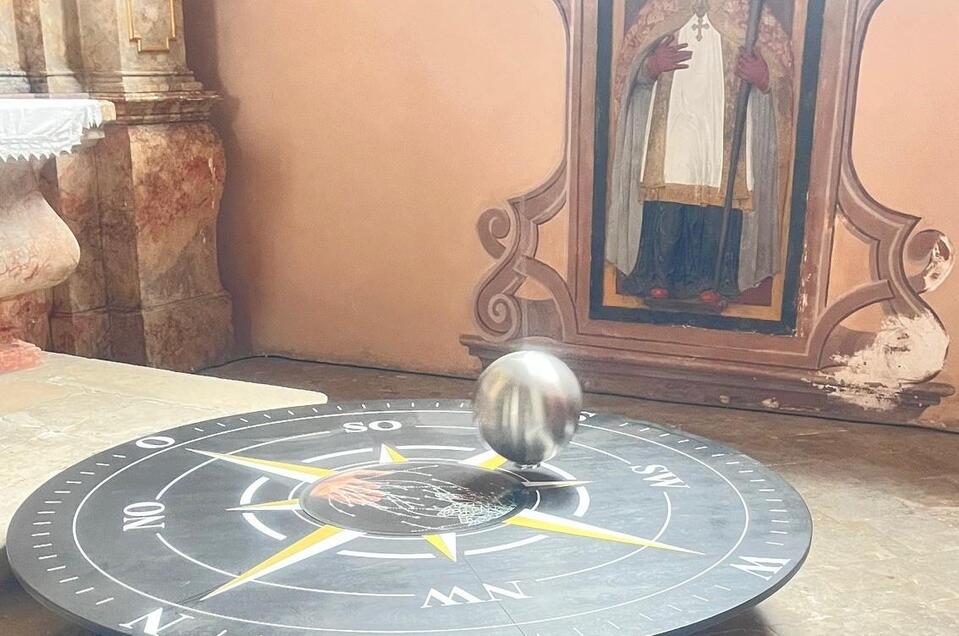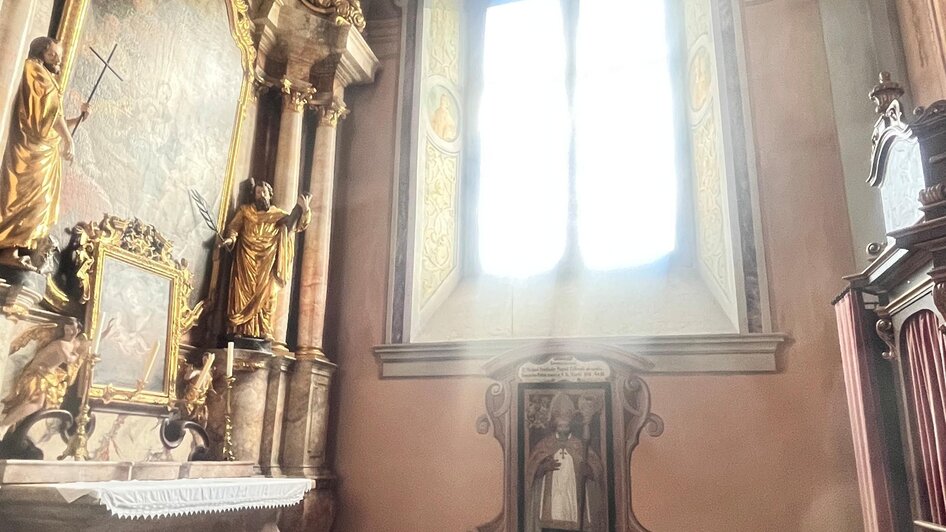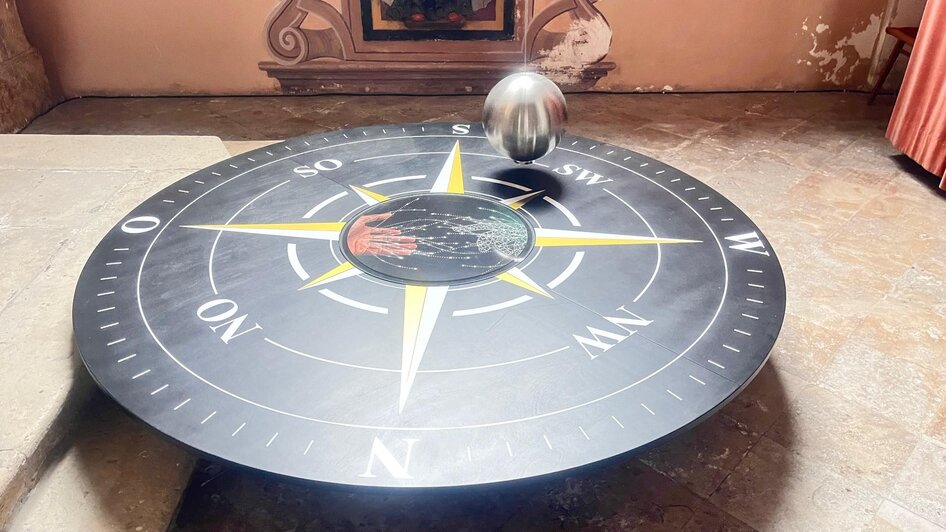Foucault pendulum in the curch Pöllau
PöllauThe Foucault pendulum has been on display in Pöllau parish church since 2024.
The Foucault pendulum was attached to the ceiling of Pöllau parish church in a side aisle. The Foucault pendulum is a freely suspended pendulum that - kept in motion by a magnetic drive - indicates the rotation of the earth at any point on the globe - except at the equator. This pendulum can also be used to determine the geographical latitude of the location where it is set up. The French scientist Leon Foucault used this pendulum experiment in the Pantheon in Paris in 1851 to provide impressive proof of the Earth's rotation.
and yet it moves!
Since time immemorial, our species has been searching for the why and how of our existence on earth. In our minds, the earth, and thus we humans, have usually been at the centre of this search. Yes, and the world outside (sun, moon, stars) circled around us, seemingly timelessly eternal. In the awareness of our mortality and the longing for eternal life, hundreds of creation stories were written to understand and explain this mystery. It was only around 400 years ago that an understanding of the laws of science began to emerge in order to explain the interrelationships in the cosmos. The validity of the laws was and is verified through experiments. Until the 17th century, there was a fixed idea of a geocentric view of the world, at least in Europe (Earth and man are the centre of the universe).
In the 17th century, physical observations of the heavens by Giordano Bruno, Galileo Galilei, Nicolai Copernicus, Johannes Kepler ... radically changed the scientific view of the world. The new insights into the laws of celestial mechanics prevailed. The church, however, held on to the old for a long time instead of recognising that nature and its laws - from the point of view of faith - are part of God's plan of creation and that it is the task of science to describe these laws. Result:
The earth and therefore we humans are not the centre of the universe. It is not the sun and the stars that revolve around the earth, but the earth revolves around itself and orbits the sun once a year at the edge of our inconspicuous galaxy, the Milky Way. In 1851, Leon Foucault demonstrated the Earth's rotation to the general public with his spectacular pendulum experiment in the Pantheon in Paris. The pendulum always swings back and forth in the same direction if it is not influenced by external forces. The rosette on the floor shows that the earth continues to rotate "under the pendulum". For people of faith, the pendulum can also tell something of the mystery of creation in its deliberate movement, which always appears to be the same. Foucault's pendulum shows the rotation of the earth In 1851, Léon Foucault carried out a spectacular experiment in the Pantheon in Paris: A 28 kg brass ball was suspended from a 67 metre long steel cable and set swinging. After some time, it was observed that the pendulum's plane of oscillation appeared to have changed. In reality, however, the earth continued to rotate beneath the pendulum. This was one of the first experiments to provide direct proof of the Earth's rotation. You can marvel at a miniature replica of this experiment here!
Sammeltaxi Oststeiermark SAM, reservation under +43 50 36 37 38 or ISTmobil.at
Open to the public at any time!








